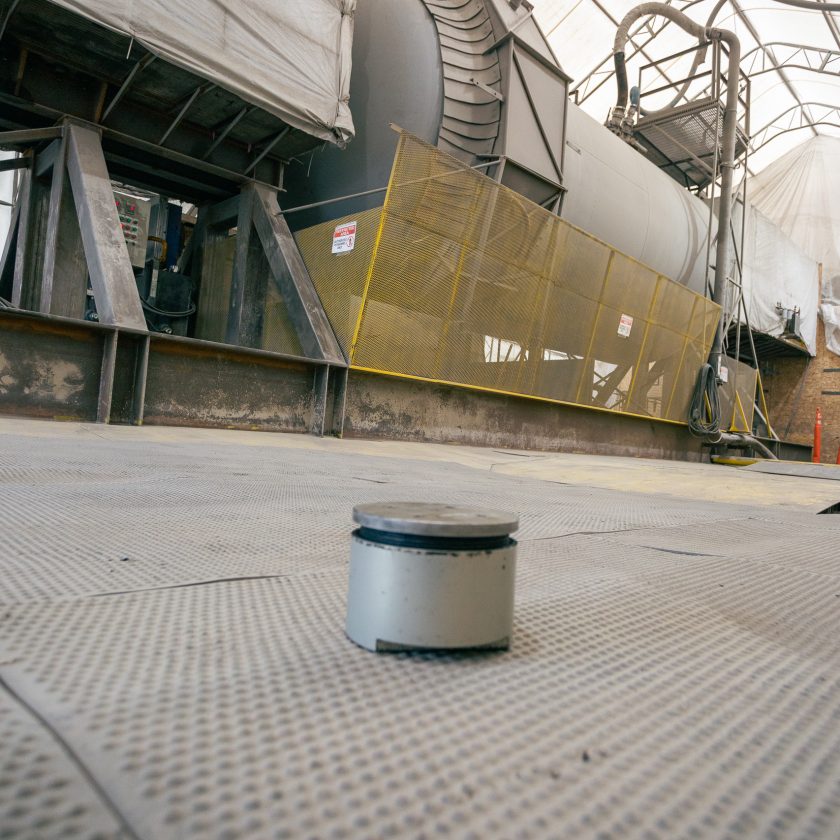The Right Strategy Can Improve Cement Plant Operational Performance and Energy Management.
By Mike Tay
 More stringent environmental regulations are pushing the cement industry to find ways to be competitive while improving energy and capacity management.
More stringent environmental regulations are pushing the cement industry to find ways to be competitive while improving energy and capacity management.
New capabilities, like machine learning, are expanding what’s possible. It can help you learn what’s happening in your cement operations and also predict what’s going to happen. This can then lead to improved production and maintenance strategies, so you can perform better and consume less energy per produced ton.
Machine learning using adaptive algorithms is making successful predictive performance and maintenance strategies ever-more achievable for global cement producers.
Before you implement machine learning, however, you will want to examine your business goals and the best ways to bring them to life.
There are four principal machine learning strategies in cement: predictive maintenance, anomaly detection, predictive KPIs and model predictive control (MPC). Below, we explore the varying techniques and their unique benefits.
Predictive Maintenance: Get Ahead of Failures
Predictive maintenance can forecast and identify when major equipment or systems will fail earlier. This allows maintenance teams to address issues before they lead to downtime.
Predictive maintenance can also reduce your maintenance spend, because it helps you catch issues earlier. Rather than needing larger amounts of money to repair or replace damaged equipment, you can make targeted repairs and avoid threatening issues, altogether.
Ideally, your predictive maintenance technique archives data and maps past failure types to understand what the various classes of failures look like. This will help the system identify when a similar pattern appears in the future. It can then notify the operator that maintenance is needed for the specific issue to help avoid downtime and reduce maintenance costs.
Most large-scale moving equipment (conveyors, drives, shakers) can move toward more ideal maintenance cycles (not too early, not too late) with the support of failure-detection models.
Anomaly Detection: Uncover Poor Performance
Anomaly detection learns normal patterns for cement operations, such as grinding, blending, and kiln cooling and preheating. It can then alert operators when something is operating abnormally or something is wrong in the process.
For example, imagine your clinker system is not cooling sufficiently. Anomaly detection could help you detect the specific problem that is occurring – perhaps the cooler exhaust temperature is high for current loading or distributed unusually. Additionally, the anomaly-detection technology could alert the operator of the issue much earlier than normal alarm conditions. This allows operators to react before downtime, extended periods of poor performance or other issues occur.
Anomaly detection can also tell you, specifically, why an issue appears unusual, rather than simply triggering an alarm or alert. Getting to the root of the issue quickly can decrease your downtime and increase your overall equipment effectiveness (OEE) by flagging where improvements can be made for things like availability, productivity and quality.
If you struggle with performance issues in your plant, have significant, fairly frequent issues, but it generally takes too long to troubleshoot, this is a great place to start.
Predictive KPIs: Hit Your Goals
Predictive KPIs forecast results and estimate what is causing poor performance in areas like product quality, energy efficiency, throughput and yield. This technique utilizes regression models to predict typical process indicators and whether or not they stay within expected ranges.
Some questions that you can answer with predictive KPIs include: Is your Blaine or free lime on track? Is the hot-end kiln temperature correct? Are exhaust emissions at acceptable levels? And if not, how can it be improved to get back in line with achievable targets?
Predictive KPIs are used to focus on a specific measurement of success for your operations. Anomaly detection may tell you that a problem is occurring in your plant, but a predictive KPI will allow you target this specific issue, whether it is yield, energy management or productivity.
MPC: Optimize Your Process
MPC is complete, closed-loop decision automation. It uses dynamic process models to coordinate and stabilize a cement process at maximum performance levels, while keeping safely within equipment limits. Because MPC is a more complex, multivariate optimizing technology, it can drive multiple KPIs simultaneously to improve and tradeoff overall performance.
Imagine being able to wake up in the morning and have your decisions for things like breakfast duration, feasible trip stops or transportation made for you. MPC brings this capability to your cement operations. The plant is constantly driving toward the KPIs you prioritize, the right achievable balance of throughput, yield, quality and energy management. For example, MPC can drive mills and kilns to their best performance 24/7 by pushing them to the right active constraints.
Measuring MPC is fairly simple. The strategy will target a specific set of KPIs. These are usually tons of cement produced, specific energy cost and product quality (intermediate or final). An MPC solution will look at the sets of KPIs and drive to a targeted balance within equipment and quality limits.
MPC is even more effective the better you understand and can specify relative issues and KPIs to target in operations.
Start Learning
Many machine-learning techniques improve time to value, making it easier for you to implement one or more of the above solutions to assist with operator decision-making. Before diving into machine learning, work to understand the current opportunities and challenges of your operations and what relevant data is available and being archived.
Mike Tay is an advanced analytics product manager for Rockwell Automation. For more information on machine learning, visit www.rockwellautomation.com.




